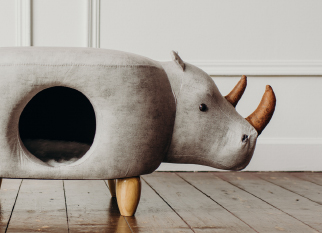Custom Linen Fabric: In-depth Analysis of Factors Affecting Yarn Thickness and Price
Yarn Thickness: Dual Reflection of Quality and Price
The thickness of yarn, usually measured by "count", is a key parameter in custom linen fabrics. The larger the count, the finer the yarn, and the finer and softer the woven fabric. This fineness not only enhances the touch of the fabric, but also makes it more suitable for fine cutting and sewing, thereby increasing the grade and beauty of clothing or household items. The finer the yarn, the higher its production cost, because the production of fine yarn requires finer raw materials, more complex processes and higher technical requirements. These additional costs will eventually be reflected in the price of the fabric.
Specifically, the production of fine yarn requires the selection of high-quality flax fibers, which often come from high-quality flax crops with a long growth cycle and relatively small yields. The spinning and weaving process of fine yarn also requires higher precision and stricter quality control to ensure the uniformity of the yarn and the overall quality of the fabric. These factors together lead to the fact that the price of fine yarn linen fabric is usually higher than that of coarse yarn fabric.
Other Factors Affecting the Price of Custom Linen Fabric
In addition to the thickness of the yarn, the price of Custom Linen Fabric is also affected by a variety of other factors. Here are some of the main influencing factors:
Raw material cost: The price fluctuation of flax raw materials will directly affect the production cost of the fabric. The cost of each link of flax crop planting, harvesting, processing, etc. will affect the price of the final product. There are also differences in the quality and price of flax in different regions, which also makes the price of linen fabrics from different sources different.
Production process: The complexity and precision of the production process are also important factors affecting the price. Post-processing processes such as dyeing and printing require professional technology and equipment, which will increase the production cost. High-quality dyeing and printing effects often require more time and resources, which increases the price.
Design elements: If the fabric contains special patterns, colors or texture designs, these design elements may require additional cost investment. Designers' creativity, digital processing of patterns, precise color matching, etc. all require professional skills and equipment support, which will be reflected in the final price.
Order size: Large-scale production can spread fixed costs, thereby reducing unit prices. For small batches or custom orders, the unit price is usually higher because economies of scale cannot be enjoyed. Custom orders also require additional design, proofing and communication costs, which will also increase the final price.
Market demand: Changes in market demand will also affect prices. When linen fabrics are in short supply in the market, prices may rise. Conversely, when there is an oversupply, prices may fall. Understanding market dynamics and predicting future trends are essential to developing a reasonable pricing strategy.
Brand premium: Well-known brands or high-end custom brands may charge higher prices due to their brand reputation and added value. These brands usually have stricter quality control, more professional design teams and more complete after-sales service systems, which will increase the value of the products and be reflected in the price.
Regional differences: Production costs, tax policies and market competition conditions in different regions may lead to price differences. Some regions may have richer linen resources, more advanced production technologies and more favorable tax policies, which makes the prices of linen fabrics in these regions relatively low.
Environmental protection requirements: As consumers' environmental awareness increases, more and more consumers begin to pay attention to the environmental performance of fabrics. In order to meet this demand, some manufacturers have begun to use environmentally friendly materials and production processes to produce linen fabrics. These environmental protection measures often require additional cost investment, such as using harmless dyes, reducing wastewater discharge, etc., which will increase production costs and be reflected in prices.



















